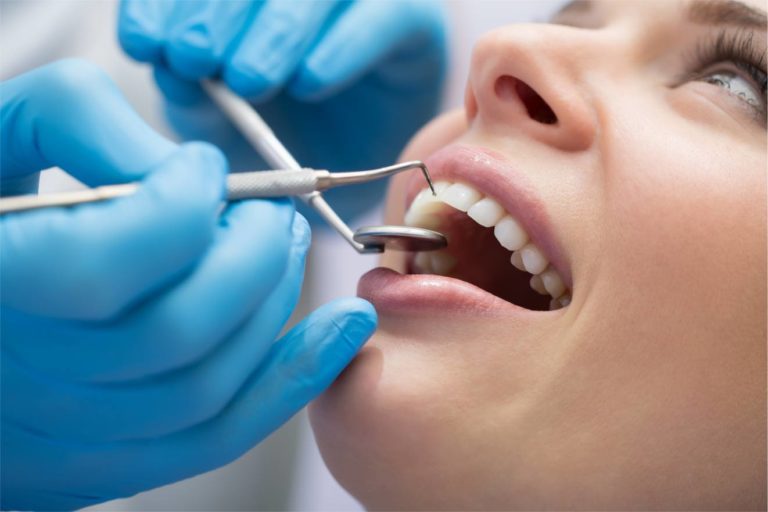Conservative dentistry
Conservative treatments – what is it?

Conservative treatments – indications and contraindications
Indications
Contraindications
We can treat this way almost all teeth with carious lesions, except for cases with the loss of a significant part of the tooth crown, where prosthetic treatment is more desirable. This way you can also cure cavities of non-caries origin, which are the result of clashing or breaking off fragments of hard tissues. Separate indications are teeth incorrectly shaped or discolored due to genetic diseases or food deficiencies. Preventive treatment is also used as a method of repair, when caries develops under the filling performed many years before or the inflammation process in the tooth canals resumes.
If the patient neglects regular visits to the dentist or ignores pain symptoms, it may happen that the teeth are too damaged to be treated conservatively, because the material will not have anything to hold on to. Extensive inflammatory changes in the bone surrounding the tooth or significant tooth dislocations are further contraindications to preventive methods. The final decision on the treatment method is always made by the dentist based on detailed diagnostics.
Conservative treatments – types of treatments
Caries is the most common disease that affects our teeth, caused by bacteria that secrete substances that dissolve hard tissues. This leads to the destruction of the crown, and sometimes even the root of the tooth. Treatment includes removing the infected part and then rebuilding it with materials that color, structure and strength mimic the natural tooth. Today we can find unusual diversity of materials used in conservative dentistry. In the anterior teeth, where high aesthetics are required, we use the technique of combining different shades to achieve a perfect look, while in the lateral teeth the most important are strength and resistance to forces acting, for example, during eating. The constant development of dental materials allows us to meet even the highest expectations of the patient.
Sometimes, caries causes infection of the tooth root. There are canals there, in them nerves and blood vessels, which is the cause of pain. In this case, endodontic treatment should be performed: removal of damaged tissue from the canals and filling them with substitute material (see: endodontics).
Teeth can be also damaged by other factors. They can get worn as a result of improper brushing or chipped due to excessive clamping or grinding. This results in cavities that also need to be cleaned and filled. Leaving them as they are not only weakens the entire structure, leading to even more damage, but also can be an additional place for the development of caries.
Conservative treatments – the course of the procedure
Each treatment in this field begins with local anesthesia, which provides comfort to the patient, eliminating pain during the entire procedure. The next stage is installation of a cofferdam, which enables the precise and predictable work of the doctor. It is a rubber insulating the treated tooth from the environment, thanks to which the procedure is complete aseptic. Isolation from saliva is very important because almost all materials used in conservative treatment require complete dryness during their insertion into the cavity. The cofferdam has many advantages also for the patient – it solves a problem of excess water in the mouth (used for cooling during development) and eliminates a risk of accidental falling of tools or materials into the mouth or throat.
Actually, after anesthesia and inserting the cofferdam, the patient can completely relax, because then the doctor painlessly and thoroughly cleanses the tooth, and rebuilds it with material imitating natural tissues. Finally, the doctor adjusts the filling for proper contact with other teeth, and the patient can evaluate the final result.
In the case of need for endodontic treatment, the procedure is also performed under anesthesia and with a cofferdam cover, including removal of bacterial infected tissues from the tooth canals with the use of machine tools, thorough rinsing with disinfectants and then tight filling (see: endodontics). Of course, the final element is the restoration of the tooth crown in the manner described above.
Conservative dentistry – frequently asked questions (FAQ)
Pricing
| Anesthesia | Free |
| Temporary dressing | Starting at 150 PLN |
| Filling in a milk tooth | Starting at 200 PLN |
| Light-curing filling | Starting at 380 PLN |
| Removal of tartar, fluoridation, sealing | 400PLN |
| Fluoridation | 50 PLN |
| Tooth sealing | 250 PLN |
| Whitening of a dead tooth | Starting at 450 PLN |
| Overlay whitening 1 arch | 650 PLN |
| Whitening with the lamp on 1 visit | 1200 PLN |
| Relaxation rail 1 arch | 500 PLN |
